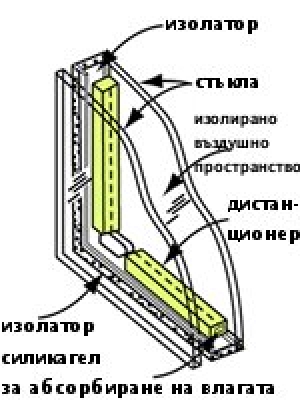
White (4,5 or 6 mm) и white (4,5 or 6 mm) glass or combination between them with total thickness from 15 ÷ 32 mm. That glazed glass has coefficient of heat transition 2,7 W/m2K, which doesn’t meet the requirements in REGULATION No.7 from 15.12.2004 for heat preservation and economy of energy in buildings.
White (4,5 or 6 mm) and low-e (soft coats) glass 4mm with total thickness from 15 ÷ 32 mm with coefficient of heat transition 1,3 W/m2K. That is an energy saving glazed glass which helps us to reach optimum heat isolation of the joinery having in mind that 75 ÷ 90 % of the window surface is glazed glass.
Laminated glass (triplexes 3.1.3, 4.1.4 and 5.1.5 mm) and low-e (soft coats) glass with thickness 16 ÷ 32 mm.
Glazed glasses with external glass in different colours, light reflective – Stop stoll glasses and white, low-e (soft coats) glass.
Glazed glasses with external coloured (blue, green, brown and grey) glass and white or low-e (soft coats) glass with thickness from 15 ÷ 32mm.
Glazed glasses with four-season glass and white or low-e (soft coats) glass with thickness from 16 ÷ 32 mm.
Glazed glasses with Sunergy glass and white or low-e (soft coats) glass with thickness from 16 ÷ 32 mm.
Filling in the chamber between the two glasses with inert gas argon 480.
All abovementioned options can be done by filling the chamber with gas argon which improves the coefficients of the respective types with 0,1 W/m2K up to 0,2 W/m2K.

















